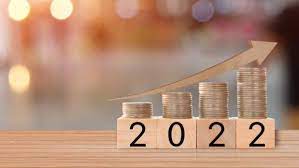MarketWatch
The numbers: The Federal Reserve’s favorite inflation calculator rose by 0.6% in January and showed the biggest yearly increase since 1982, underscoring why the central bank is poised to raise interest rates for the first time in four years.
The increase in the so-called personal consumption expenditure price index points to still-intense inflationary pressures in the U.S. economy. The gauge has climbed 6.1% in the past year to mark the fastest rate since February 1982.
The better known consumer price index rose by an even higher 7.5% in the 12 months ended in January. That’s also the largest move since 1982.
Key details: A narrower measure of inflation that omits volatile food and energy costs, known as the core PCE, rose by 0.5% in January.
Economists polled by the Wall Street Journal had forecast a 0.5% increase.
The increase in the core rate in the past 12 months also moved higher to 5.2% — the biggest advance since January 1983.
The Fed views the PCE index — the core rate in particular — as the most accurate measure of U.S. inflation. It’s more comprehensive and takes into account when consumers substitute cheaper goods for more expensive ones, among other things.
Big picture: Inflation is a sore spot for the economy.
Companies are jacking up prices to cover their own rising cost and passing the increases onto consumers. High inflation in turn is costing Americans dearly at grocery stores, gas stations and so forth.
Now interest rates are set to rise and make it more expensive to borrow to buy a home, new car or other big-ticket item.
Most economists and the Fed had been predicting inflation would subside later in the year as persistent labor and supply shortages ease. Yet the Russian invasion of Ukraine threatens to send oil prices soaring and possibly make inflation worse in the short run.













